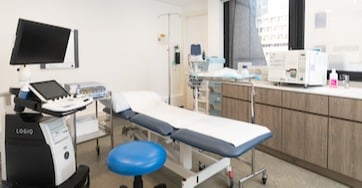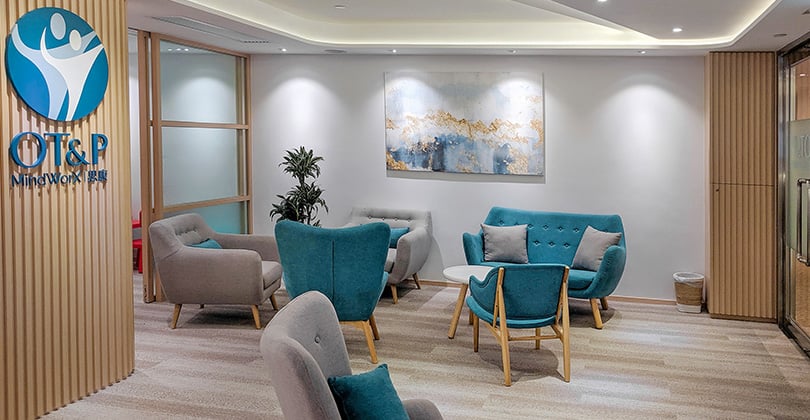Cancer remains as one of the leading causes of illness and mortality worldwide, affecting millions of lives every year, in Hong Kong and beyond. Approximately 4 in 5 cancer deaths occur in individuals whose cancer were not discovered by recommended screening protocols [1]. This highlights the critical gap in early cancer detection and demonstrates the need for innovative solutions that liquid biopsies offer.
What is Liquid Biopsy?
Based on the evidence that cancer cells and their metabolic byproducts can be found in the bloodstream or other bodily-fluids, liquid biopsy is a revolutionary medical test that analyse a blood, spinal fluid or urine sample to detect cancer-related markers (cancer signals) or fragments of genetic materials. These markers or tumor genes present valuable information about the possible presence or risk of development of cancer, its progression, and even potential treatment responses and long-term surveillance.
How is Liquid Biopsy Done?
Liquid biopsy is a minimally invasive procedure that begins with a blood sample, typically drawn from a vein in the arm or a spinal tap or submission of urine sample. These samples are then processed to separate its components, where various analytical techniques are then used to identify any possible abnormalities or mutations. Proprietary algorithms then decode or compare the detected genetic fragments or mutations from the processed samples to a library of genetic code or sequences that correlates to tumors that shed or express those. A report is then generated detailing whether the sample yielded negative or positive for circulating tumor cells or DNA fragments, and what organ or organ systems may be involved.
Liquid Biopsy in Cancer Screening
Traditional cancer screening, such as a CT and MRI scans, mammograms (breast cancer), surgical biopsy (lymphoma), and colonoscopy (colorectal cancer) to name a few, are complex, invasive processes that may require an overnight stay in the hospital or downtime afterwards. Most importantly, they only screen for a single type of cancer at a time, with an average of 40% of tests being false positives [5]. The MCED (multi-cancer early detection) technology we use at OT&P, such as LucenceINSIGHT™, specifically screens for the ctDNA (circulating tumor DNA) of up to 50 cancers in one simple blood draw, with less than 1% of tests being false positives [3]. By detecting these ctDNA, the tiny fragments of DNA released by tumors into the bloodstream, potential cancers can be identified and risk-stratified at the earliest stage, even before cancer symptoms appear.
Liquid Biopsy is Capable of Detecting Circulating Tumor DNA (ctDNA) of the Following:

When is Liquid Biopsy Testing Most Beneficial?
As a screening tool, liquid biopsies help identify any emerging tumors or abnormalities before they progress, which is ideal specifically for individuals who may be at higher risk of developing cancer due to factors such as:
- A strong family history
- Genetic predispositions
- Smoking
- Alcohol consumption
- Obesity
- Exposure to carcinogens
- Radiation Exposure
- Sun exposure
- Chronic inflammation
- Hormonal factors
- Infections
- Physical inactivity
- Certain autoimmune diseases
Or Individuals experiencing unexplained symptoms, such as:
- Persistent fatigue
- Unexplained weight loss
- Loss of appetite
- Changes in skin
- Lumps or swellings
- Changes in bowel or bladder habits
- Chronic cough or hoarseness
- Difficulty swallowing
- Unexplained pain
- Unusual bleeding
- Unexplained persistent fevers
- Severe night sweats
- Unexplained persistent nausea or vomiting
- Persistent headache or dizziness or disorientation
‘Among the most commonly diagnosed cancers in Hong Kong, more than half of the cases are diagnosed at an advanced stage’ [2]. Early detection is crucial in improving survival rates, as many cancers are more treatable when caught in their infancy. And with early detection and treatment, individual cancers can increase the five-year survival rate (the percentage of people who were alive five years after receiving a cancer diagnosis) by up to 14.5 times [4].
If you or a loved one are more susceptible to the development of tumors and invasive cancers by virtue of familial predisposition, lifestyle or environmental factors or are experiencing unexplained symptoms, discuss liquid biopsies with your family doctor to explore your options. We, at OT&P Healthcare, are always willing to have this discussion with you.
References
1. Bray, F., Laversanne, M., Sung, H., Ferlay, J., Siegel, R.L., Soerjomataram, I. and Jemal, A. (2024). Global Cancer Statistics 2022: GLOBOCAN Estimates of Incidence and Mortality Worldwide for 36 Cancers in 185 Countries. CA: A cancer journal for clinicians, 74(3), pp.229–263. https://doi.org/10.3322/caac.21834.
2. Hospital Authority (n.d.). Overview of Hong Kong Cancer Statistics of 2021 . [online] www3.ha.org.hk. Available at: https://www3.ha.org.hk/cancereg/pdf/overview/Overview%20of%20HK%20Cancer%20Stat%202021.pdf [Accessed 24 Apr. 2025].3. Lucence.com. (2024). Patients | LucenceINSIGHTTM 路胜因思康TM. [online] Available at: https://insight.lucence.com/patients/ [Accessed 24 Apr. 2025].
4. National Cancer Institute (2018). SEER Cancer Stat Facts. [online] SEER. Available at: https://seer.cancer.gov/statfacts/.
5. Taksler, G.B., Keating, N.L. and Rothberg, M.B. (2025). Implications of false-positive results for future cancer screenings. Cancer, 124(11), pp.2390–2398. https://doi.org/10.1002/cncr.31271.
 Central General Practice
Central General Practice
 Repulse Bay
Repulse Bay
 Clearwater Bay
Clearwater Bay
 BodyWorX Clinic
BodyWorX Clinic
 Central Specialist Clinic
Central Specialist Clinic
 MindWorX Clinic
MindWorX Clinic
 Partner Clinics
Partner Clinics
 Family Clinic
Family Clinic
 OT&P Annerley Midwives Clinic
OT&P Annerley Midwives Clinic




